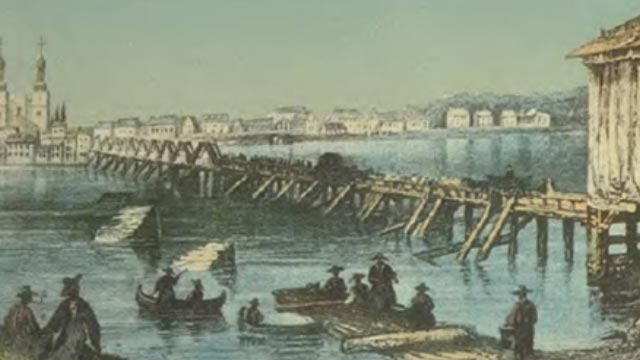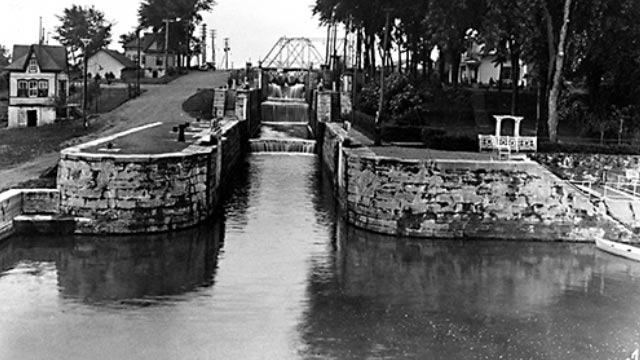
From proposal to construction: 1784 to 1843
Chambly Canal National Historic Site
As the backbone of trade between the St. Lawrence River and Lake Champlain, the Richelieu River presents an assortment of navigation obstacles, including many turbulent rapids between Saint-Jean-sur-Richelieu and Chambly. Since 1784, the dream of building a canal along the Richelieu River gave rise to an initial project originating not in Lower Canada, but in Vermont. In 1787, Governor Dorchester made Saint-Jean the border station and business gateway between Upper and Lower Canada and the United States. As similar projects followed north and south of the border, the British military viewed them all as potential threats to the colony’s defence. It wasn’t until April 1, 1818, that the Assembly of Lower Canada approved the construction of a canal from Dorchester, known today as Saint-Jean-sur-Richelieu, to the Chambly Basin.
The long-awaited project experienced many delays
Although merchants and politicians from the Richelieu area supported the canal, Quebec City’s merchant traders were unable to raise the £45,000 (pounds) deemed necessary for its construction. Fortunately for the Richelieu project, the valley’s political and business elite argued in its favour. In 1823, legislation was passed in Lower Canada authorizing the canal’s construction with a single notwithstanding clause, namely that the work should only begin once the Lachine Canal had opened. It wasn’t until 1829, four years after the Lachine Canal had opened, that commissioners were appointed to oversee the Chambly Canal’s construction. They included Gabriel Marchand and William Macrae from Saint-Jean-sur-Richelieu, René Boileau and Samuel Hatt from Chambly, and Timothée Franchère from Saint-Mathias.

Deplorable working conditions
In September 1831, three Americans from Amsterdam, New York, and the Andres brothers from Chambly committed to building a 10-lock canal at a cost of £46,218 (pounds). On October 1, one hundred workers, most of whom were Irish, began excavating the canal basin using picks and shovels, working 12 hours a day. Despite the cholera epidemic that broke out in 1832, some 600 workers managed to dig two thirds of the canal’s 19.31 kilometres, as well as the lock ditches. Paid in cash, the workers were required to purchase all their daily supplies at stores owned by their bosses. Were the workers unhappy with their wages? Were they trying to organize? The bosses had the leaders arrested immediately. Despite all this, workers saw their workday shortened to 10 hours. They also kept their two meal breaks.
The canal opens to navigation in 1843

In 1833, the canal was filled with water and vessels sailed from Dorchester to Chambly. Struggling with financial problems, the US bidders jumped ship in 1834. The Andres brothers, out of a sense of duty and for their family’s honour, attempted to re-launch the work in vain. The work stopped in 1835. It was only in 1840 that a new firm agreed to complete the entire project for £35,000 (pounds). From August 1840 until late 1842, some 800 workers were involved in building Chambly’s combined locks, wharves and bridges, and in excavating the last 1,100 feet of the route. On June 9, 1843, the first steamship crossed the nine Chambly Canal locks as it travelled from Saint-Jean to Quebec City. This was the steamer Quebec. As it passed through Chambly’s combined locks, the crew admired the new facilities built to ensure the operations of this barge canal. These operations continue to this very day.
Alain Gelly / Historian, Parks Canada
Related links
- La Société d’histoire de la seigneurie de Chambly (French only)
- The steamer Quebec
- Journal de Chambly article (French only)
- Date modified :